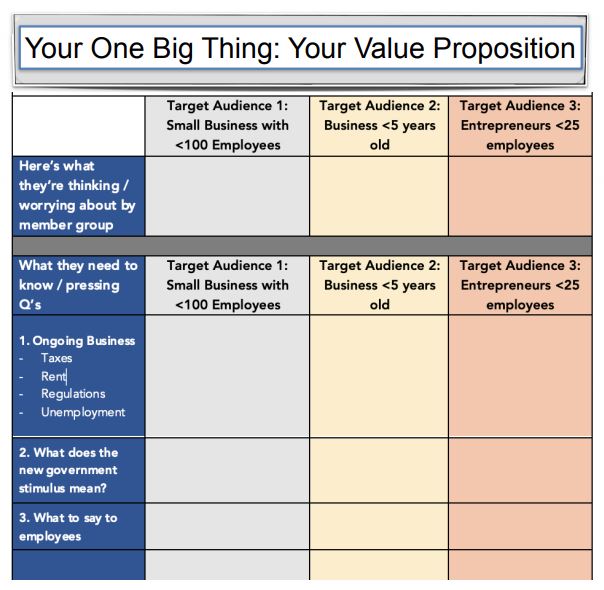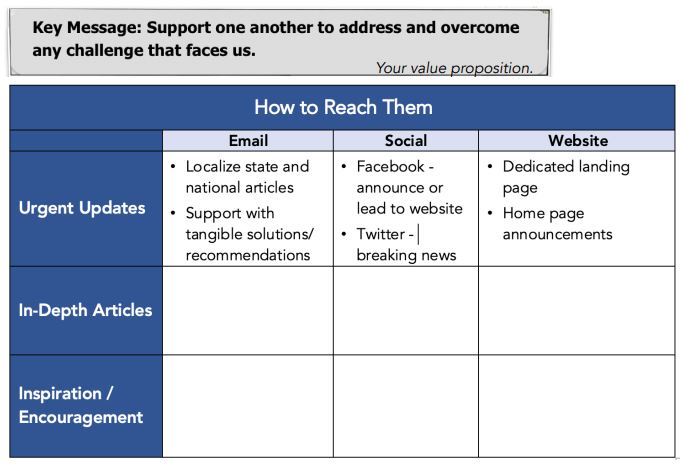A Six-Step Approach to Communicating in a Crisis
Your association cannot afford to wing communications in a crisis. As Melynn Sight, president of nSight Marketing, emphasized during ASAE’s Marketing, Membership & Communications Conference, inconsistent crisis communications inspire fear and doubt. Rash decisions about what, when and how something is said can frequently lead to poor outcomes that leave your members wondering just how much of a leader your association really is in your field.
You can, and should, prepare to communicate during a crisis by developing a crisis communications plan. Sight walked through her six-step approach to communicating in a crisis:
1. Show care.
In a crisis, before people decide what they think of your message, they decide what they think of you, Sight shared. Not only is it a leading organization’s job to convey facts during a situation, it’s also your job to assuage fears and doubts. You must carefully consider your word choice. Are you speaking inclusively to all your audiences? Are you being careful not to leave room for misinterpretation? Think about your communications’ tone. Does it match the level of sincerity you want to convey? Does it match the seriousness of the situation? Finally, remember that the nonverbal language of your representatives is just as important as the accuracy of their words. Show that you care about your audience in each of these respects.
You can prepare your organization to show that it cares by collaborating with your communications team to answer these four questions in advance of a potential crisis:
- What’s the goal? In other words, how do we want to help people?
- Who’s the audience? The better you know your audience, the better you’ll write or speak for them, and the stronger your words will resonate.
- What’s in it for them and for me? And, so what? Focus on what’s important to your members. If it’s business protection, connect over verbiage about what your association is doing to protect their interests. If it’s safety, choose words that emphasize wellbeing.
- What do you want them to do? Don’t assume people know what to do next. Everyone needs to be told what to do next in a crisis. Be clear about the next steps you hope your community will take.
 Associations North has shown it cares about a specific audience with clear direction about how others can help. Associations North developed its member support program Pay It Forward in response to tourism and hospitality members facing financial hardship during the 2020 shutdown that prevented it from being able to renew its association memberships. Pay It Forward simply asks other Association North members and supporters to donate funds that will cover the cost of dues for hospitality members unable to afford their renewals. Keeping these members in the AN family means they’ll continue to have access to professional resources and networking channels at a time when they most need it. Starting with the name of the program itself, Associations North showed that they care about members through their program goal, audience, benefits and directed steps for everyone involved.
Associations North has shown it cares about a specific audience with clear direction about how others can help. Associations North developed its member support program Pay It Forward in response to tourism and hospitality members facing financial hardship during the 2020 shutdown that prevented it from being able to renew its association memberships. Pay It Forward simply asks other Association North members and supporters to donate funds that will cover the cost of dues for hospitality members unable to afford their renewals. Keeping these members in the AN family means they’ll continue to have access to professional resources and networking channels at a time when they most need it. Starting with the name of the program itself, Associations North showed that they care about members through their program goal, audience, benefits and directed steps for everyone involved.
2. Make a Crisis Plan
If you have a communications plan, Sight said, you have a crisis plan. Communications plans help you focus and spring into action quickly when a crisis happens. However, about 54% of organizations don’t have a communications crisis plan.
Remedy that now by laying the foundation for one. Start with the four “care” questions above, and then build it with details, audiences and channels you’ll use and desired outcomes. Your organization’s crisis communications plan will differ from that of others based on how big you are and how many channels you normally use to communicate with stakeholders.
It should have a stated objective or key message at the top. This is the north star of your plan. It’s your reason for having this plan in the first place. Your key message could be a broad statement that you want to support members and help them overcome any challenge facing them. Or, it could be more specific, such as providing the most up-to-date information related to coronavirus restrictions and guidance for re-opening your industry for business in your state.

Next, write down who your audiences are and what their most pressing concerns are. Do some surveys or focus group research to determine what these needs will likely be. Map out some basic topics your association will want to communicate about with them and how you’ll reach them.

3. Decide on the people and inputs.
It’s up to your leadership to coordinate crisis communications. Decide in advance who will handle what based on the key message you have promised to deliver to your members. Decide which resources you’ll dedicate to your crisis communications. You don’t have to dedicate every communications tool at your disposal to a crisis– just the ones that make the most impact with your stakeholders.
Plan for regular update intervals to your audience. People appreciate a schedule, even in a crisis. Keep your goal, audiences and what members need to know in mind as you plan to iterate your communications.
4. Own It
Once you must put your plan into action, own it. Follow your plan as you’ve laid it out and adjust as needed.
Remember that showing members you care means more than just saying words. Back up your words with action. People remember organizations that support their community with resources and action. Sight shared the example of the Ontario Real Estate Association personally calling half of their 80,000 members at the start of the pandemic to check on them individually. In the process, they asked how OREA could help each individual weather local shutdowns and collected updated information for 32,000 member records. Only 512 raised concerns about OREA’s efforts, and the staffer reaching out relayed their concerns to the appropriate association staff member who could help resolve it.
Furthermore, their COVID-19 information hub offered online mental health services at the start of the pandemic to back up their claim that “We have your back.”
5. Deliver on Your Value Proposition
The next step in planning is to prove your value to your audience. How will the information you provide be relevant, different and credible? Give members a good reason to choose to get information from your association. The most visible and memorable way to do this is to have a key message that sums up why members should choose your association for their limited time and attention. Your key crisis message should be a clear and compelling statement of value stating why your association is unique. It should answer what your most important stakeholders need the most. And it should state what your association does well right now.
Your crisis key message can be different from your “normal” key message. For example, Uber changed its pre-pandemic key message from “The smartest way to get around” to “Helping move what matters” during the pandemic. Slack changed its messaging from “Be more productive at work with less effort” to messages about business continuity, which was important for the millions of workers now clocking in from home instead of an office.
6. Stick to Readability Basics
Even when communicating in a fast-paced crisis, remember best practices for communication. Good writing and clarity of message is still needed. Think index cards, not toilet paper, Sight said: People don’t want to read novellas in their inbox or on your website during a crisis. They want fast information! Make your communications simple to read and easy to digest. You have even less than the normal two seconds to grab and retain someone’s attention during a crisis. Make the information useful. And don’t try to “PR” anyone, Sight advised. Information is going out, but you need communication to get through. A crisis isn’t the time to try to influence someone about your position or overall organization. Just sell the problem you’re solving at the moment.
After the Crisis
Follow up with members who ask for more information even long after a situation has calmed. Give your members a good reason to renew: Your association took care of them during a crisis by fulfilling their information needs and helping them prepare for what came next. Action like this builds your reputation and shows leadership by owning every communication that comes out of your organization.
Keep working on your crisis communication plan. Refine what worked well and re-work what didn’t. Revisit your key message: Did it resonate with stakeholders? Did it address their most important concerns? What else did members want to know about? This key message will guide you, set expectations, and unify your staff and leadership going forward.
Many of these tips will help you communicate like a pro even during non-crisis times. Following them will help you make stronger connections that members will remember when it’s time to renew their membership.
In a crisis, everyone is in the communications business. Make a crisis communications plan so that when the next crisis happens, everyone on your team is ready to serve in the most prepared way possible.
More Resources:
Sample crisis communication plan template
Discovering your one of a kind proposition value for building your key message
Both resources courtesy of nSight Marketing.

